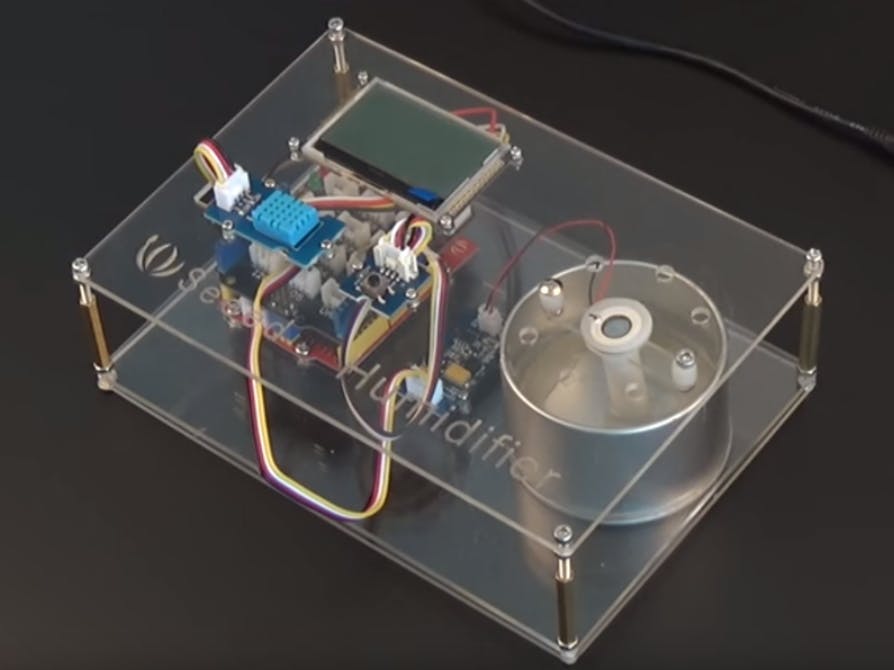About: Hello, the author of the project is an Application Engineer of Seeed Studio. It's great to share this project with the Hackster maker community. I hope you like Seeed Studio, a hardware enabler for IoT applications, which provides services that enable IoT developers to quickly prototype... More information about Seeed Studio »
Let's see the video first.In today’s society, more and more attention to the quality of life, pursue the healthy and comfortable living environment. So we made this device to monitor the indoor temperature and humidity, when the humidity falls below the safe values, it will automatically open the humidifier.
Step 1: What You Need• Arduino/Seeeduino• Grove – Temp&Humi Sensor• Grove – Button• I2C_LCD• Grove – Water AtomizationGrove - Water Atomization is a perfect module for you to develop an atomizer or an atomizer module in your applications easily. With just a few simple steps, you can prototype an atomizer. It has Grove interface which makes it easy to be integrated into plenty of applications. A humidifier is a basic device it can be built with, you can develop more advanced and interesting projects with digital scent technology and any other situations in which atomization required.
Step 2: Make a ShellThis device needs a shell to fix the Grove Modules, So my friend from Seeed help me cutting the acrylic sheets, I guess you don't have a laser cutting at home, you can find some in the hacker space near from you easily. If there's no hacker space nearby, you can try the Laser Cutting Service supply by Seeed.
You can download the Design Drawing by click https://github.com/Lee-Kevin/7.AutomaticHumidifier/.
Step 3: Connect the ModulesConnect the module as the below shows:
- Grove – Temp&Humi A0
- I2C_LCD I2C-Port
- Grove – Water Atomization D5
- Grove – Button D2
We assume you have connected your Arduino board and computer well with USB.
- Download demo code at https://github.com/Lee-Kevin/7.AutomaticHumidifie...
- Click “Download zip” button on right side of webpage to download all codes.
- Decompress the downloaded zip files to“C:\Users\Administrator\Documents\Arduino\” and remove “-master” in decompressed file name.
- Launch Arduino IDE.
- Click Sketch>Add file to add Humidifier1.ino file from“C:\Users\Administrator\Documents\Arduino\7.AutomaticHumidifier\Code\Humidifier1\”
- Press CTRL +U to upload codes to your board. Wait a while, there will be prompt like following figure:
Congratulations, you have already completed the most of the work.
Step 5: Test ItNow you can test your device to see whether it can work well as the video shows.

















Comments
Please log in or sign up to comment.